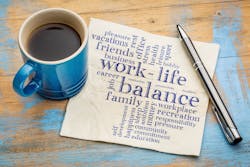Over the holidays, the U.S. Bureau of Labor Statistics reported that the number of workplace deaths for the year 2018 was up 2% over the previous year. I don’t know why the government waits until late December to get this news out, unless it’s to bury it when most people are focused on shopping and Christmas parties rather than worker fatalities (now that I think of it, I’m sure that’s exactly why they wait till year’s end to report it), but in any event, it’s a sobering reminder that for all the advances in PPE, safety technology and mandated standards, the workplace can still be a dangerous place.
“With the innovative tools available to today’s employers nationwide, it’s concerning that we’re continuing to see higher numbers of worker fatalities,” says Diana Stegall, president of the American Society of Safety Professionals (ASSP).
Of course, the number of people employed has been on the rise, too, and in fact the rate of death did not increase, but still, that’s not much consolation to the families of those workers who died on the job.
“Most occupational incidents are preventable given today’s technologies and proven safety and health strategies,” Stegall points out, and she’s exactly right. The main causes of preventable worker deaths are motor vehicle crashes and falls, according to the National Safety Council, and the number one cause of preventable deaths outside of the workplace is drug overdoses.
I’m very much aware of the incidence of preventable deaths because a very close friend of mine—one of my mentors—passed away over the holidays. He was in his 80s, and he died comfortably in his sleep. Sounds like a happy ending, the kind of passing all of us would like to have, right? Maybe, maybe not. He had been retired for more than 20 years, so his death certainly wasn’t a workplace fatality. But I think his life story is a cautionary tale, one all too familiar in the workplace, of somebody who didn’t take good enough care of himself while he was working, to the point that his quality of life once he retired was dramatically reduced because of his lifestyle decisions. His mind still retained the same spirit and sense of humor that always inspired me, but his body had started shutting down to the point where he couldn’t even enjoy the activities he’d looked forward to doing once he stopped working.
My mentor was a great guy and a hard worker, and he certainly did all that he could to provide for his family, and I won’t pretend to guess at the stresses that pressed upon him throughout his career (though I knew they were plentiful). I do know that he smoked too much and he ate too much of the wrong kinds of things. He didn’t get much exercise, probably didn’t get anywhere close to 8 hours of sleep every night, and he spent far too much time worrying about work and not enough taking better care of himself. Does that sound like somebody you know? Does that sound like you?
When it comes to “safe” lifestyles, we’re constantly being reminded to ensure our food is safe, our drinking water is safe, our homes are safe, the roads we drive on are safe, even that our personal information stored on computers is safe. But how safe are you from yourself?
The American Institute of Stress (yes, there really is an entire organization dedicated to stress research) collects a lot of statistics about workplace stress, and just looking at their findings stresses me out! Apparently, three-quarters of the population experience physical and psychological symptoms caused by stress, and the top cause of stress among American workers is job pressure. The AIS recommends such stress-reducing activities as exercise, yoga, mindfulness, more sleep, a better diet. Many of you are indeed setting a great example for your colleagues, but too often we fall into the trap of letting work take precedence over health.
Look, I get it: Work is stressful. Life is stressful. But that doesn’t mean stress needs to control us. Death may be inevitable, but let’s not make it easier on the Grim Reaper by making poor lifestyle decisions that shorten our lifespans and cheapen our quality of life.
The mandate of a safety leader is to keep every employee out of harm’s way, so let’s not forget that we’re all employees ourselves. Don’t leave yourself out when it comes to protecting everybody in your workforce.
About the Author

Dave Blanchard
Editor-in-Chief / Senior Director of Content
During his career Dave Blanchard has led the editorial management of many of Endeavor Business Media's best-known brands, including IndustryWeek, EHS Today, Material Handling & Logistics, Logistics Today, Supply Chain Technology News, and Business Finance. In addition, he serves as senior content director of the annual Safety Leadership Conference. With over 30 years of B2B media experience, Dave literally wrote the book on supply chain management, Supply Chain Management Best Practices (John Wiley & Sons, 2021), which has been translated into several languages and is currently in its third edition. Prior to joining Endeavor/Informa/Penton, he spent a decade covering the artificial intelligence industry. He is a frequent speaker and moderator at major trade shows and conferences, and has won numerous awards for writing and editing. He is a voting member of the jury of the Logistics Hall of Fame, and is a graduate of Northern Illinois University.
